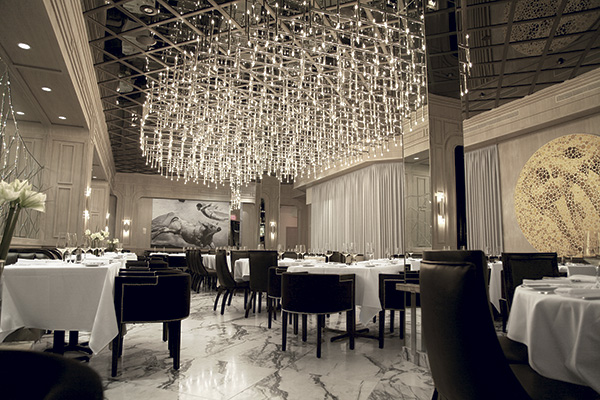Lighting. Every restaurant has it and the number of options available to owners and designers seemingly multiplies by the day. "It's like going to a candy shop: there are so many options available, where do you stop?" says John Ziebarth, AIA, NCARB, design services + studio director, food service for api(+), a Florida-based retail store design and architecture firm.
So how can a restaurant owner and designer make sense of all the options available? Ziebarth offers a simple answer: hire a lighting designer. "They can walk the restaurant owner through all of the big picture questions such as lifecycle costs, maintenance and more," he says. "You will end up with a better solution without paying too much. The lighting world is an entire engineering discipline in and of itself. Architects will look at specific fixture types whereas lighting design professionals will be aware of all the options available."
In addition to working with a lighting designer, each restaurant project should take into consideration a handful of factors. Ziebarth shared a few key ones with rd+d.
What types of lighting levels are important? Not important? During the initial thought process you will encounter a fork in the road that impacts cost and the fixture selection. If, for example, a fine-dining operation wants a lot of control over the lighting the restaurant will need to include a dimming system and may consider LEDs to help control energy costs. In contrast, the requirements for a QSR or fast-casual operation could differ considerably.
Identify the lighting characteristics in terms of color quality. Some restaurateurs are more sensitive to this than others but it will impact the color of your lamping. For example, some restaurant operators may be less concerned about the light levels at the table and will place a greater emphasis on keeping the overall space warm and inviting. So it depends on the experience the restaurant wants customers to have.
It's also important to consider the desired color temperature of the lighting because there's a balance between the fixture output and how high that fixture is. How much light is necessary at the table for customers to read the menu and enjoy the experience? We see more LED solutions because restaurants can dim them, which leads to more flexibility.
Budgeting: Light fixtures vary from simple incandescent options to dimmable LEDs to other kinds of bright halogen fixtures that display art work and other aspects of FFE. The lamping categories used will help drive the cost of the lighting. In some cases restaurants will have lighting plans that use more than one lamp type to get a desired effect. Also keep in mind that all fixture lamping generates a certain amount of heat. So it is important to understand the latent heat load a fixture will generate because it could impact heating and air conditioning use. For example, halogen lamps used to showcase art work or retail items inject a lot of heat into a space. In contrast, LEDs don't inject a lot of heat into the space but they do vent some heat out the top.
Is decorative pendant lighting appropriate? Some of those fixtures become a recognizable element in all of a restaurant's locations. That takes you into the coolness factor of lighting design that can energize a brand.
Don't forget maintenance and durability: These are really important concerns. The life cycle and maintenance costs associated with re-lamping an entire restaurant can be costly. Many opt for LEDs in the front of the house to lower their operating and maintenance costs.

